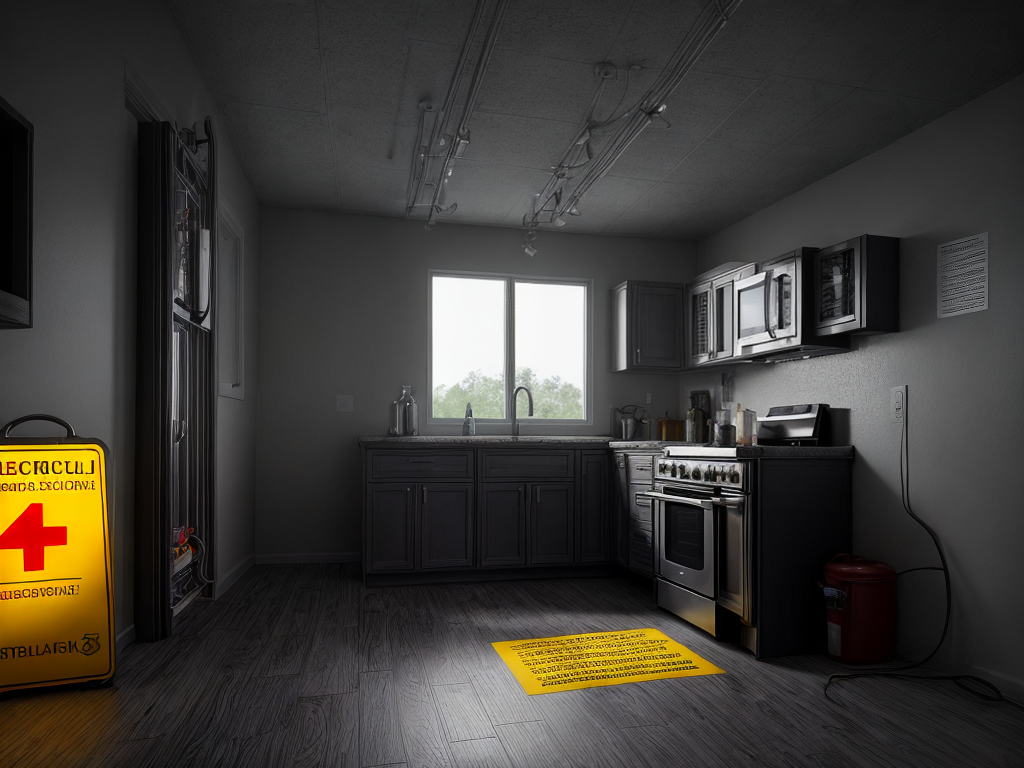
As an electrical maintenance professional, I’ve seen tragedies unfold like sparks igniting a wildfire. Negligence in our field has cost lives, leaving me with a heavy heart. In this article, titled ‘Fatal Accidents: Electrical Maintenance Negligence Revealed,’ I’ll expose the alarming number of preventable incidents. Through research and real-life cases, I’ll delve into the factors contributing to these accidents. It’s time for us to wake up, implement stricter safety measures, and ensure the well-being of our colleagues.
Unsafe System of Work
I have observed that an unsafe system of work can lead to fatal accidents in electrical maintenance. Improper supervision and insufficient risk assessment are two key factors that contribute to these accidents. When employees are not properly supervised, they may engage in unsafe practices or take unnecessary risks. This lack of supervision can result in serious injuries or even death. Additionally, when there is an insufficient risk assessment, workers may not be aware of potential hazards or the proper safety precautions to take. This increases the likelihood of accidents occurring. Therefore, it is crucial for employers to provide adequate supervision and ensure that proper risk assessments are conducted to maintain a safe working environment in electrical maintenance.
Inadequate Information
How can inadequate information increase the risk of accidents during electrical maintenance? Improper documentation and knowledge gaps play a significant role in increasing the chances of accidents. When there is a lack of necessary information, workers may not have a clear understanding of the equipment they are dealing with, leading to potential hazards. Without proper documentation, workers may be unaware of safety procedures or precautions, putting themselves at risk. Knowledge gaps can also result in workers being unaware of potential dangers, leading to serious injuries or even death. Accidents occur when workers are not adequately informed about the electrical systems they are working on, highlighting the importance of comprehensive and accurate information in maintaining a safe working environment.
Lack of Training
Lack of proper training increases the likelihood of injuries and accidents in electrical maintenance. When it comes to training effectiveness, it’s crucial for workers to receive comprehensive and relevant instruction. It’s not enough to simply provide basic knowledge; workers must understand safety procedures and precautions specific to their job tasks. Employers play a vital role in providing adequate training. They should ensure that all employees receive the necessary training and have access to resources that enhance their knowledge and skills. Additionally, employers should regularly assess the effectiveness of their training programs and make necessary improvements. By prioritizing training and investing in the development of their workforce, employers can significantly reduce the risk of accidents and create a safer working environment.
Inadequate Isolation
Proper isolation procedures are crucial for ensuring worker safety during electrical maintenance tasks. Negligent maintenance and the use of improper equipment can lead to inadequate isolation, increasing the risk of electrical accidents. When isolation procedures are not followed correctly, workers are exposed to live power sources, which can result in serious injuries or even fatalities. Failure to isolate power sources before performing maintenance can cause electric shocks, burns, or other life-threatening incidents. It is essential for employers to provide clear guidelines and training on proper isolation techniques to prevent accidents. Adequate safety measures, such as lockout/tagout procedures and the use of appropriate personal protective equipment, should be implemented to ensure the safety of workers during electrical maintenance activities.
Unsafe Rules
While working in the field of electrical maintenance, I have witnessed the devastating consequences that can arise from the disregard of safe rules and regulations. The issue of unsafe rules is a major concern in our industry, with serious implications for both workers and employers. Here are some discussion ideas to consider:
- Enforcement challenges:
- Inconsistent enforcement of safety rules across different companies and worksites.
- Lack of clear guidelines and standards for implementing and enforcing safety measures.
- Limited resources and manpower to monitor compliance with safety regulations.
- Legal implications:
- Potential lawsuits and legal penalties for companies that fail to enforce safe rules.
- Workers’ compensation claims and financial burdens for employers.
- Damage to a company’s reputation and loss of trust from clients and stakeholders.
Addressing these challenges and ensuring strict adherence to safe rules is crucial to prevent accidents, protect workers, and maintain a safe working environment.
Lack of Supervision
I’ve witnessed firsthand the detrimental effects of inadequate supervision in the field of electrical maintenance, highlighting the importance of proper oversight in ensuring worker safety. Improper guidance and negligent oversight can have catastrophic consequences. Without effective supervision, workers may not receive the necessary guidance and direction to perform their tasks safely. This lack of supervision can lead to workers taking unnecessary risks or making critical mistakes that result in accidents and injuries. Additionally, without proper oversight, there is a higher likelihood of workers being exposed to hazardous situations without the necessary precautions in place. It is crucial for companies to prioritize supervision and ensure that supervisors are well-trained and actively involved in monitoring and guiding workers to prevent incidents caused by negligence and lack of oversight.
Poor Risk Assessment
My experience in the field of electrical maintenance has shown that a company’s negligence in conducting proper risk assessments and implementing safety measures can lead to disastrous consequences. Improving risk assessment is crucial in preventing accidents and ensuring the safety of workers. It involves identifying potential hazards and evaluating the level of risk associated with each task. By thoroughly assessing risks, companies can develop effective strategies to mitigate them, such as implementing safety protocols and providing appropriate training. Hazard identification is a vital component of risk assessment as it allows for the identification of potential dangers that workers may encounter during their tasks. Properly identifying hazards ensures that necessary precautions are taken to prevent accidents and protect employees from harm.
Failure to Follow Safety Protocols
I haven’t seen such a blatant disregard for safety protocols as I witnessed in the electrical maintenance industry. Negligence in following safety protocols can have dire consequences, leading to serious injuries or even fatalities. It is essential to enforce safety protocols in the workplace to prevent such incidents from occurring.
Here are a few discussion ideas to highlight the importance of enforcing safety protocols:
- Consequences of negligence in electrical maintenance:
- Fatal electric shocks and severe injuries to workers
- Life-altering accidents resulting in amputations and disabilities
- Emotional trauma for both the victims and their families
- Importance of enforcing safety protocols in the workplace:
- Minimizing the risk of accidents and injuries
- Ensuring the well-being and safety of employees
- Avoiding costly legal battles and compensation claims
- Building a culture of safety and responsibility within the organization
Life-Altering Injuries and Fatalities
Accidents resulting in life-altering injuries and fatalities can occur due to the negligence of electrical maintenance workers. It is crucial to focus on preventing such accidents and ensuring worker safety. Here are three key points to consider:
- Implementing comprehensive training programs: Proper training is essential to equip electrical maintenance workers with the knowledge and skills to safely carry out their tasks. By providing comprehensive training programs, we can ensure that workers understand safety procedures and precautions, reducing the likelihood of accidents.
- Enforcing safe rules and regulations: Implementing and enforcing safety rules is crucial for worker safety. Failure to follow these rules can lead to life-altering injuries. Adherence to safety protocols is necessary to prevent accidents and protect the well-being of electrical maintenance workers.
- Promoting a culture of safety: Creating a culture of safety within the workplace is vital. This includes promoting open communication, encouraging reporting of hazards, and fostering a proactive approach towards preventing accidents. By prioritizing worker safety and continuously improving safety practices, we can reduce the risk of life-altering injuries and fatalities in electrical maintenance.









